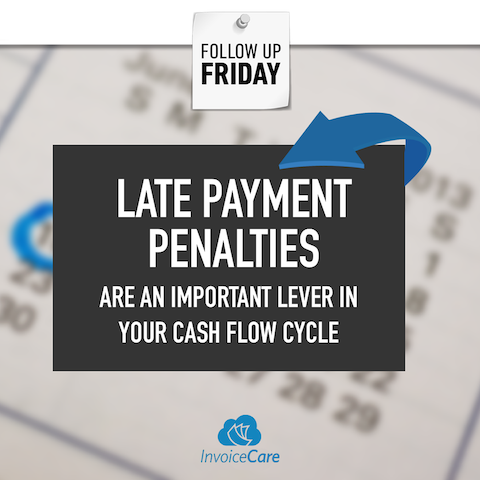Best case, all your customers pay early or on time. But since we're addressing accounts receivable best practices, we need to address topics like late payment penalties. The late payment penalty is an important lever in your cash flow cycle, so let's talk about how to set them up, how to communicate them, and how best to enforce them.
Step One: Design the Fee
First, decide what kind of late fees to charge. Late fees are most commonly either a flat fee or a percentage of the invoice amount. The most common late fee structure we see for business invoices is 1.5% per month starting when the invoice is 30 days overdue.
Note that here is some degree of complexity related to interest rates depending on the states you operate in, so you may want to check with your attorney before settling on your policy.
Step Two: Put It In the Contract
Next, in your contract, make sure you state exactly when the payment is due (i.e., the number of days), how often the client will be invoiced and the terms of the late payment penalty. You may also want to provide for the recovery of collections costs if any are incurred.
It’s also a great idea to outline what specifically will happen in the event your client doesn’t pay. For example, will you suspend services? Will you require payment up front for any future purchases? Will you pursue collections?
Step Three: Put It on the Invoice
Then, once all the terms are defined in your customer contract, take the highlights and paste them in the bottom of your invoices. A common mistake creditors make is to define a policy in their customer contracts and then not communicate that clearly in their invoices. And let's face it, a penalty that's hidden in the contract isn't nearly as effective as one that's front-and-center on your invoice.
A Word About Enforcement
Generally speaking, the hassle and pain associated with recording and collecting diligently on late fees each month is greater than the benefits derived.
In practice, the best use of late penalties is as a bargaining chip. Having late payment penalties spelled out in your contracts and on you invoices gives you something to offer up in a discussion with a late payer. Offering to waive late fees in exchange for an expedited payment can be a powerful tool in your A/R toolbox.
So, define late payment penalties clearly and up front. Communicate them well. And when needed, use them as a lever to encourage payment.
Now, go get your money.

